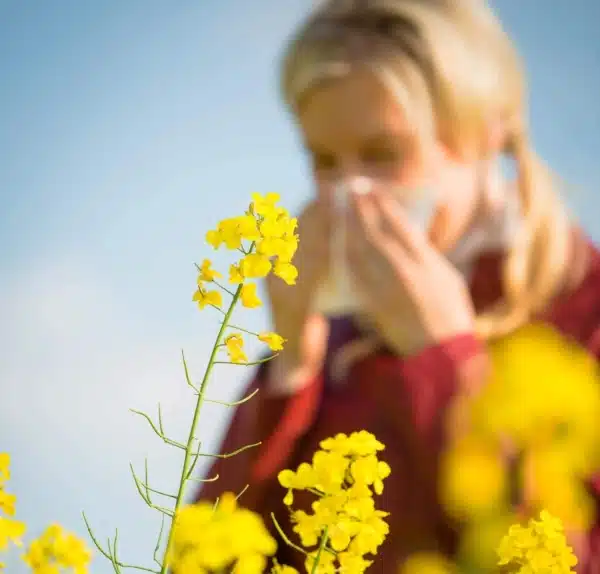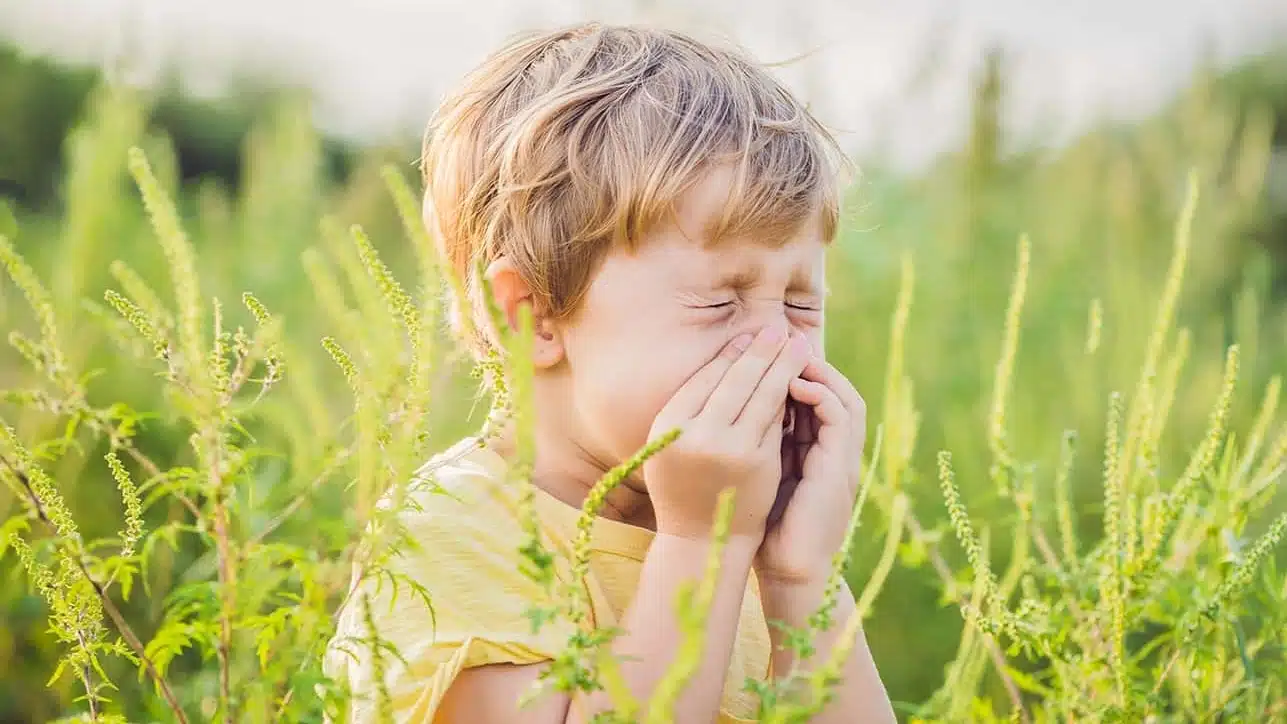 go back
go back
 go back
go back
Know the difference
Sneezing, itching, and a runny nose. Living with allergies is a constant battle. But there are specific times during the year that can impact allergy sufferers more than others.
The effects of seasonal and perennial allergies are very similar, but their causes are different. And things like the weather, the climate, the time of day, and even geographic location can all play a role in the timing and severity of symptoms.
Spring is in the air. So are allergens. How to tell the difference between seasonal and perennial allergies
For those who suffer with allergies, it is important to learn how to tell the difference between seasonal and perennial allergies, their potential triggers, and where and when they’re most susceptible to experiencing symptoms.
symptoms are nearly identical
At their core, both seasonal and perennial allergies are caused by the same thing – the body’s immune system producing antibodies to attack what it perceives as an invader.
Because seasonal and perennial allergies are both types of rhinitis (an inflammation of the mucous membranes that lines the nose), the symptoms are nearly identical. Where seasonal and perennial allergies differ is in both their duration and in their specific allergens.
Symptoms of both seasonal and perennial allergies include:
- Runny nose
- Stuffy nose
- Sneezing
- Itchy eyes, nose, mouth, and/or ears
- Red and/or watery eyes
- Swelling around the eyes

Why Is Pollen Count Important?
The pollen count measures how much pollen is in the air, but it doesn’t have anything to do with a person’s symptoms or how bad they might be.
A “low” pollen count doesn’t always mean that there aren’t many symptoms, and a “high” pollen count doesn’t always mean that there are a lot of health problems. When there are a lot of pollen grains in the air, people should usually take more care.
Learn More About Pollen CountWhat are perennial allergies?
Perennial (meaning, year-round) allergies come from allergens that are present throughout the year. Like the name suggests!
The most common causes of perennial allergies are dust mites, mold, pet dander, and insects, particularly cockroach debris. Additionally, irritants that can also cause allergy symptoms include smoke, diesel exhaust, and perfume.
What are seasonal allergies?
Seasonal allergies are allergic symptoms that occur only at certain times of the year.
According to the American College of Allergy, Asthma, and Immunology (ACAAI), the onset of seasonal spring allergies begins in February and lasts through early summer.
Seasonal allergy sufferers can also be affected by grass pollination during the late spring and summer months, while ragweed is most common during the late summer and fall.
Where you live, the climate, and the weather can all have an additional impact on the timing and severity of seasonal allergies.
What are the common causes of seasonal allergies?
Pollen is one of the most common triggers of seasonal allergies. Per the Asthma and Allergy Foundation of America (AAFA), there are three primary types of pollen allergies: tree pollen, grass pollen, and weed pollen. Each pollen is most prevalent during a different season.
Tree pollen

Tree pollen is created when flowering trees and shrubs produce microspores that are then carried by the wind, thereby allowing the pollen grains to find their way into people’s eyes, nose, and lungs.
Tree pollen is active earliest in the year, between February and May. However, the AAFA indicates that in some places, particularly in the southern region of the United States, tree pollen can appear as early as January and peak at multiple times throughout the year.
Tree species that cause the most allergy symptoms are:
- Alder
- Ash
- Aspen
- Beech
- Box elder
- Cedar
- Cottonwood
- Elm
- Hickory
- Juniper
- Maple
- Mulberry
- Oak
- Olive
- Pecan
- Poplar
- Walnut
- Willow
Grass pollen

Grass pollen is most common in the late spring and summer, beginning in April and lasting through early June and affects nearly 30 percent of children and adults in the United States.
More heavily influenced by geographical location, grass pollen can occasionally overlap both tree and/or weed pollen, and in some warmer areas of the country, it can be present throughout the year.
There are fewer types of grass that can trigger seasonal allergy symptoms, and they grow in different regions of the country.
Northern grasses: Timothy, Kentucky Blue, Johnson, Rye, Fescue
Southern grasses: Bermuda, Bahia
It is important to note that the American Academy of Allergy, Asthma and Immunology (AAAAI) points out that grass pollen is very light and easily carried by the wind, so it is possible to come into contact with grass pollen that is outside of your immediate location.
Ragweed pollen

Weed pollen occurs latest in the year, appearing in August and lasting through November.
Ragweed is particularly problematic for allergy sufferers because it is incredibly common – it grows in 49 states and can travel hundreds of miles through the air, making it difficult to avoid.
Though it impacts fewer people than grass pollen, ragweed pollen still affects about 15 percent of Americans according to the AAFA.
Per the AAFA, while there are 17 types of ragweed that grow in North America, it is not the only type of weed pollen. Other plants that can trigger weed allergies are:
- Burning bush
- Burweed marsh elder
- Cocklebur
- Eupatorium
- Groundsel bush
- Lamb’s-quarters
- Pigweed
- Rabbit brush
- Sagebrush and mugwort
- Tumbleweed and Russian thistle
Other seasonal allergies

Although pollen allergies are what are most associated with the term “seasonal allergies”, the ACAAI notes that there are additional allergy triggers that come with various seasons including:
- Smoke (common with campfires in the summer and fireplaces in winter)
- Insect bites and stings (typically in the spring and summer)
- Chlorine sensitivity in both indoor and outdoor swimming pools
- Candy ingredients (Valentine’s Day, Easter, Halloween, Christmas)
- Pine trees and wreaths (Thanksgiving through Christmas)
How do I manage seasonal and perennial allergies?
Because seasonal allergies can be specific to geographic location, it is especially important to work with a local allergist. With many locations across the country, AllerVie has a specialist that can help you devise a plan to avoid your specific triggers.
In general, AllerVie Health specialist Reena Patel, DO recommends these strategies to help manage seasonal allergy symptoms:
- Monitor mold and pollen counts
- Keep windows and doors shut at home and in your car
- Take a shower, wash your hair, and change your clothes after spending time outdoors
- Wear glasses or sunglasses outdoors to help keep pollen out of your eyes
In the case of perennial allergies, she suggests:
- Wearing a dust mask while cleaning indoors
- Use an air purifier
- Wash bedding, blankets, and rugs regularly
- Use a dehumidifier to prevent mold growth

Medically Reviewed By: Reena Patel, DO
Reviewed on: Feb. 8, 2023
Our team of writers, editors, and medical experts goes over each article carefully to make sure the information is correct and that only reliable sources are used.
We regularly check to see if the info in this article matches up with the latest scientific research and expert advice so that we can give you the most up-to-date information. See list of trusted resources here.
Get Help Managing Allergy Symptoms!
Allergies are unique as the person that experiences them. Regardless of your specific needs, there is an AllerVie provider who can work with you to diagnose your allergy and work with you to establish the best management and long-term treatment plan.
Make an Appointment